Ideas for What to Do With Kids During Guided Reading
This post contains chapter links. As an Amazon Associate I earn from qualifying purchases.
Then … you're set to practice guided reading. But what do theresidue of your students practise when y'all're working with pocket-size groups? This post has the respond!

In the past eight weeks, we've gone through both the big filmand the little details yous need to know to brand guided reading work.
- I named ten reasons why guided reading is important in Yard-two.
- I explained the guided reading levels.
- I listed places that you lot tin find texts for guided reading.
- I explained how to form your guided reading groups.
- I walked through the parts of a guided reading lesson.
- I named activities that work earlier, during, and later on guided reading.
- I showed you how to prepare a guided reading lesson.
- I gave tips for scheduling your guided reading groups.
We're nearing the end – and we have one very important thing to discuss.
WHAT ARE THE Remainder OF YOUR STUDENTS DOING?
Without an respond to this crucial question, we might as well throw in the towel. If the rest of the class is noisy, disruptive, or simply unproductive – guided reading just won't piece of work.
Thankfully, there'south an reply.
And here information technology is: The remainder of your students are doing year-long, differentiated literacy centers.
Huh?
What I mean is that your students are doing independent literacy work. These are meaningful activities (not time fillers) that you lot've prepared in advanced – and taught them to practise.
That last part is fundamental –taught them to do.

Information technology's fashion too piece of cake (I know considering I've done information technology) to simply prepare an activity, explain it with a sentence or two, and await your students to complete the activity without whatsoever issues.
This rarely works.
"I wanted to go get-go, simply he said it'south his plow!"
"I don't retrieve how to play this."
"This is as well hard!"
"I'm washed, now what practice I do?"
This post has two parts. First, I'll explain how to design year-long literacy centers that work. Second, I'll explain how to train your students to do them independently.
Part 1 – Tips for Effective Literacy Centers
Tip one – Choose open ended activities as much as possible.
This way students tin do the aforementioned heart more than once without you lot changing a thing! For case, you can have a Big Book center. Students can put viscous notes on words they know or cover words in a familiar Big Book with glutinous notes and have a partner guess what they are. Or you can write give-and-take wall words on cards for students to match to words in the book. Students can read familiar Big Books with a arrow.
See what I mean? There are endless ideas for this one center.
Recommended reading: This Reading Mama's Twelvemonth Long Literacy Center ideas
Tip 2 – When possible, keep the format, but change the routines or content.
What you want is a center where students know the routines, but you switch up the things they're doing the routineswith. For instance, you could have a poetry center with poems you've read with your students during shared reading. You list specific activities that students can do with these poems. Merely you switch up the poems each week.
Tip 3 – Differentiate wherever you can.
For instance, with the poetry heart you tin can label easy poems with a yellow dot and harder poems with a blue dot, so students can choose the poems that all-time fit their ability. Or yous could brand easy task cards printed on yellow paper, medium difficulty task cards printed on blue, and harder task cards printed on ruby-red. Tell your students which color bill of fare to apply.
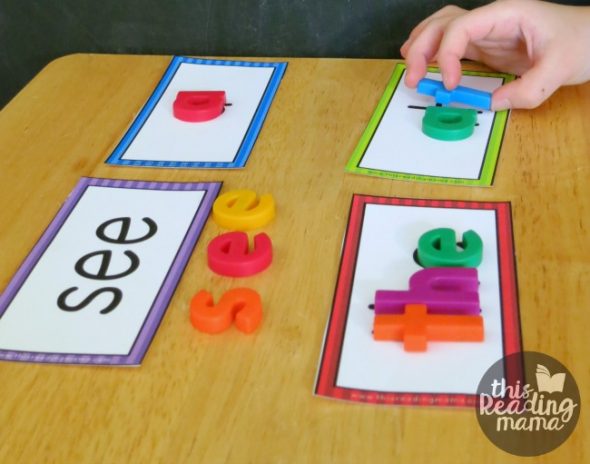
Tip 4 – Keep it elementary
Don't overdo information technology past putting too muchstuff at the center. Give only enough and then students have what they need with a little fleck of choice. Save some of your fun supplies for subsequently in the twelvemonth when you need to freshen upward the center. (Remember – the more supplies, the bigger the mess!)
Tip 5 – Never add a centre without modeling information technology showtime and giving students guided practice.
It'due south soooo tempting to download a great activeness from a blog or Teachers Pay Teachers … and then put it at a heart the following twenty-four hours. But this is a really bad idea. Even if it's a simple response sheet, you need to model information technology with the whole course or in small groupsbefore asking students to do it independently.
Tip 6 – When possible, requite students selection at a middle.
For instance, yous might have a stack of sight words at a fluency center. Requite your students two options for using the cards: play a very uncomplicated lath game with the cards or use the same cards to time each other equally they read the whole stack.
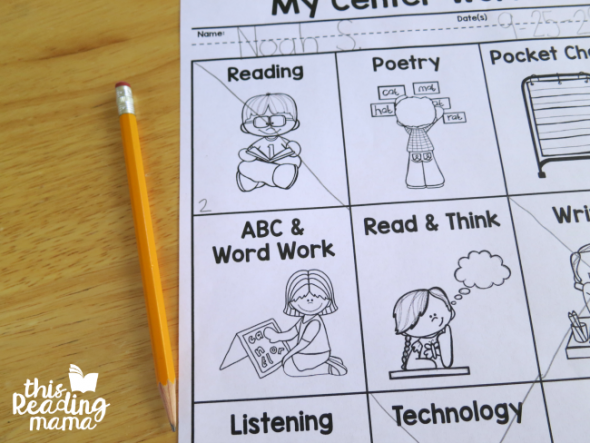
Tip 7 – Have a elementary, doable system for helping students know where they should exist during center time.
This could exist a whole post in itself! You will find many complicated pocket chart systems for helping students rotate to centers. If those work for yous – great! But they make my head spin. I similar the idea of a visual literacy center menu. Kids have a binder in which they continue their center work. In the folder is a piece of paper that tells them exactly which centers they must practice each calendar week. Each day they can cull which center(s) to do, every bit long as at that place's space at the centre. And so they cross off the centers equally they practice them.
To larn more: Visit This Reading Mama'due south post, Visual Literacy Middle Menus.
Tip 8 – Goals first. Then activities.
Think about what you want your learners to learn as readers.And so choose activities that volition aid them meet those goals. All too frequently nosotros go most this backward – nosotros choose something considering we honey it, rather than thinking about whether it will move our students toward our goals for them.
Tip 9 – Limit the amount of piece of work you need to grade.
You lot don't need proof that they've done the activity at each center. When you've taken the time to create meaningful centers (and trained your students to use them independently), they're going to be learning. Of course you volition demand ways to appraise and keep students accountable, but you lot don't need to go overboard.
Tip 10 – Piece of work your way into centers slowly.
Expect to take about 4-six weeks of practicing center piece of work with your students before they can exercise them on their own while you teach minor groups. This brings us to part ii of this mail service.
Role ii – How to Teach Your Students Independence at Center Time
Here are three large tips for introduce students to centers:
i – Assume aught.
Teach every behavior necessary for the activity to go well, even if it's obvious to you.
2 – Start simple.
Begin with the simplest centre activities that work well for teaching them to the whole grade at one time.
3 – Outset pocket-size.
Limit the number of activities and the corporeality of student option at a heart until students have shown themselves to be ready for more independence.

Here'south a step by footstep process that works:
1 – Make up one's mind the behaviors you want to see at a heart that will brand information technology successful.
two- Teach each behavior one at at fourth dimension in a whole form mini-lesson.
3- Yous might also have a student model a behavior you exercisenot desire to see.
4 – Be sure to conclude by having a pupil model the right behavior one more fourth dimension.
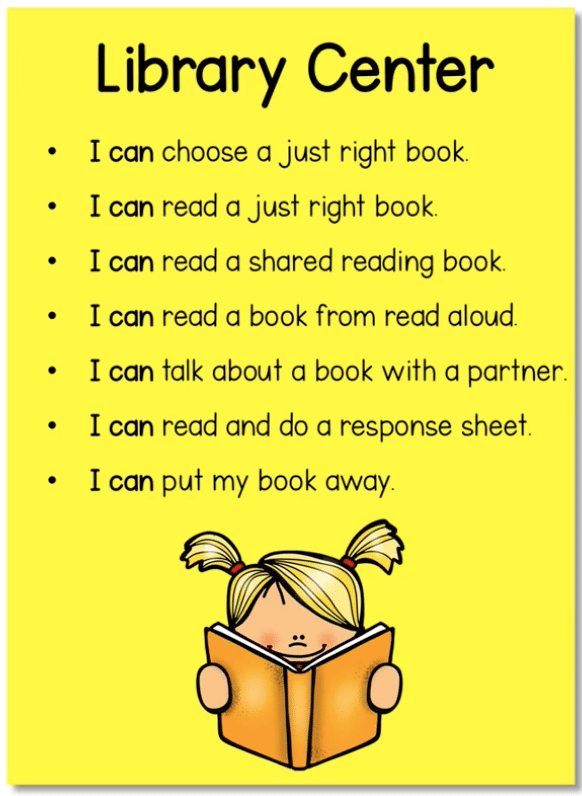
5 – Every bit you teach the behaviors, display them on an "I Can" chart.
vi – Accept your students practice the desired behavior every bit a group. When someone gets off task, cease the exercise and bring the group together to evaluate how they did.
7 – When students are doing well at a particular heart, introduce a new ane.
You can meet why it can take 4-6 weeks until students are working independently at centers.
Only it'south worth it! When yous take the time to create year-long, meaningful centers – and you lot train your students to utilise them independently – yous tin focus on your guided reading lessons.
Everybody wins!
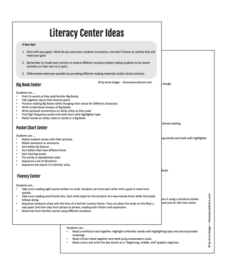
Get your free printable with year-long literacy center ideas!
Click below to run into the rest of my guided reading series!
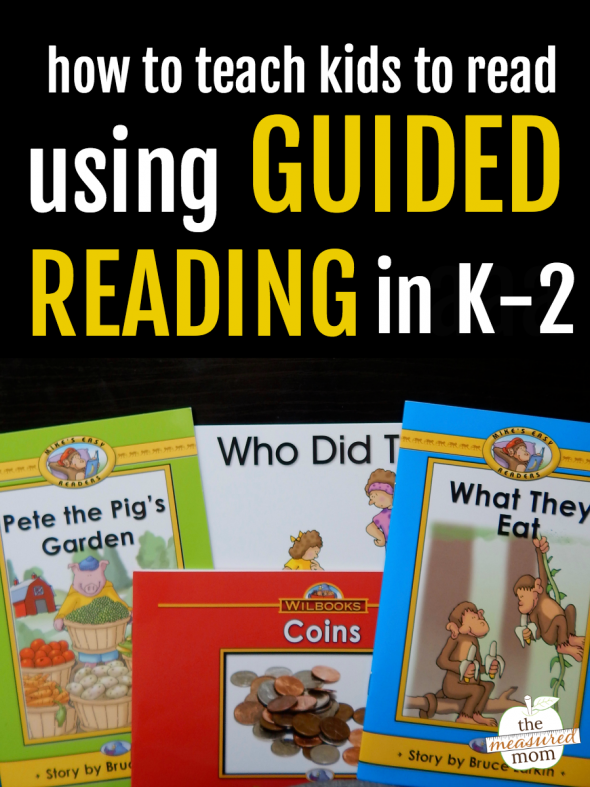
Source: https://www.themeasuredmom.com/what-to-do-with-the-rest-of-your-students-during-guided-reading/
0 Response to "Ideas for What to Do With Kids During Guided Reading"
Post a Comment